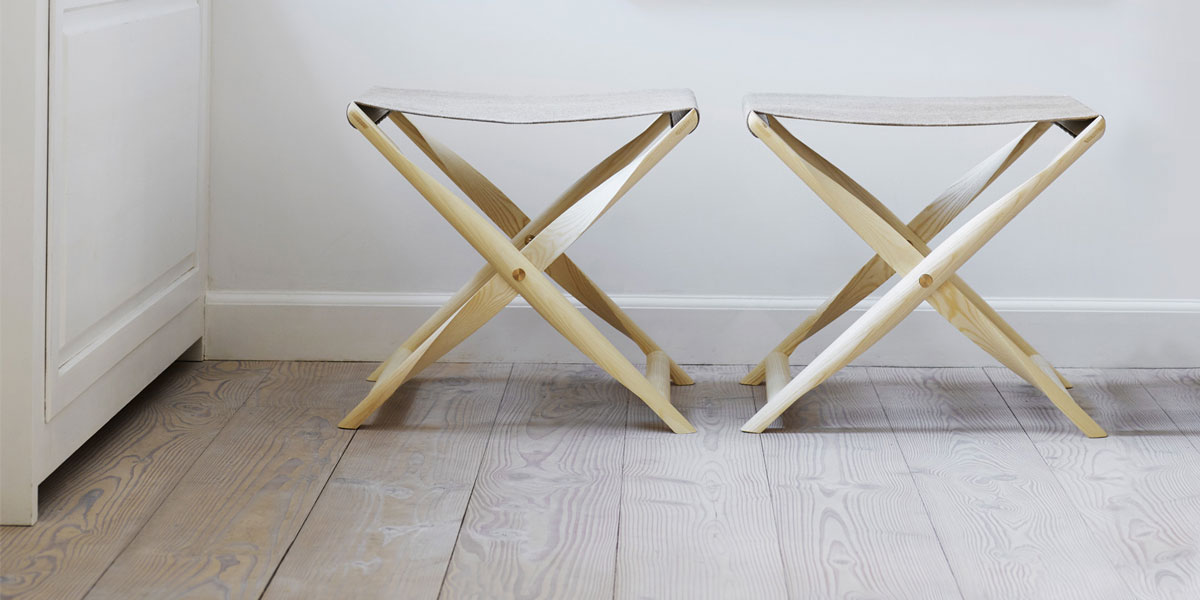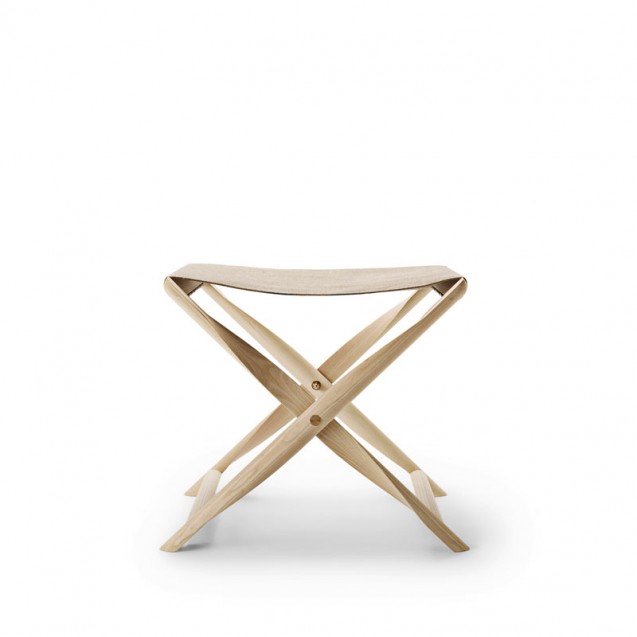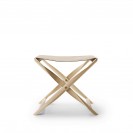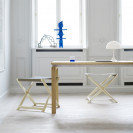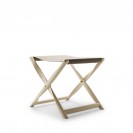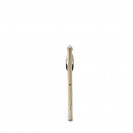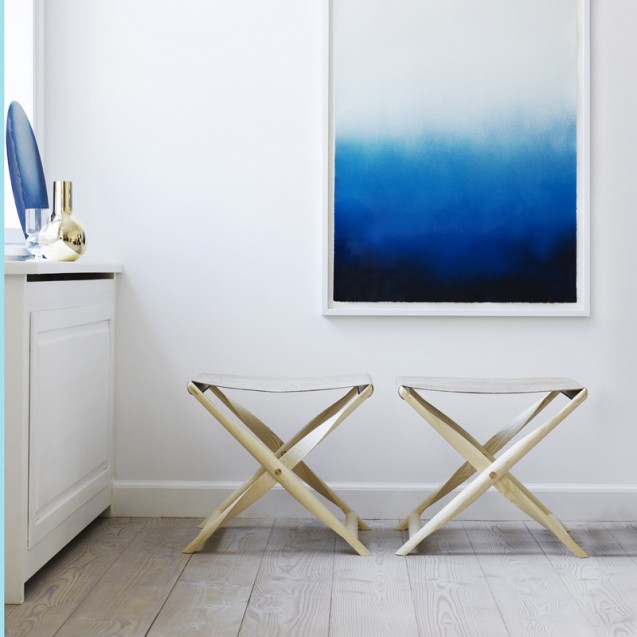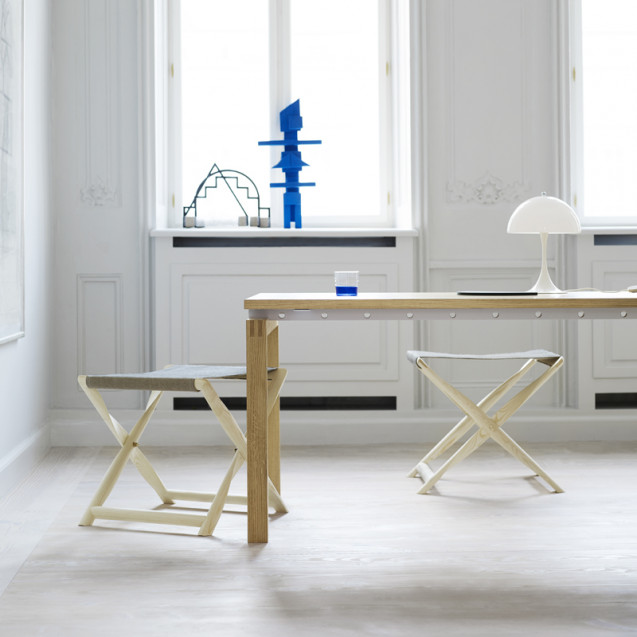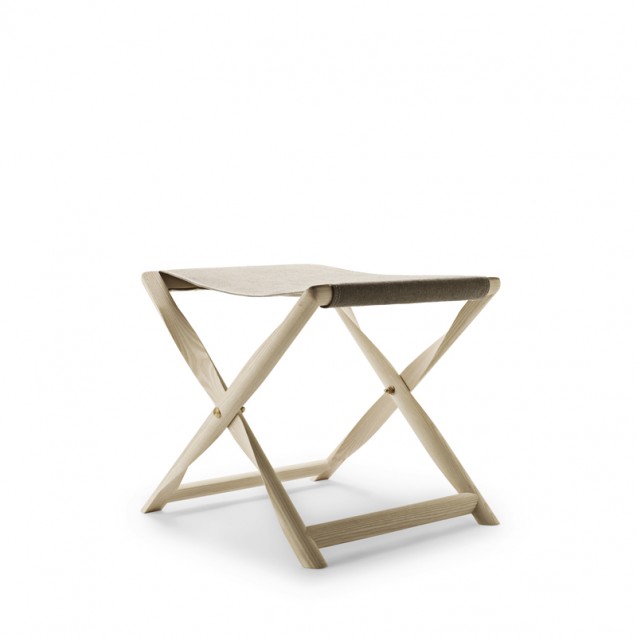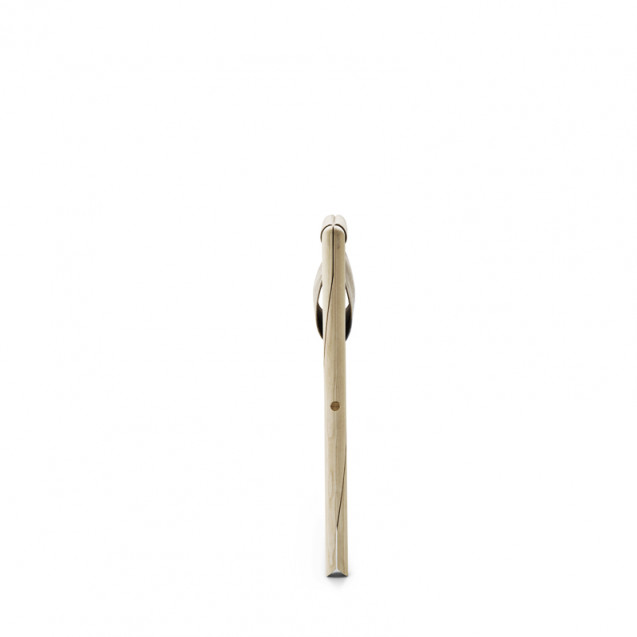KK87830 Propeller
The KK87830 Propeller Stool by Kaare Klint was initially
thought to be too complex to put into production. The 1930 design quickly
attracted attention, however, and was featured as a concept in several design
books. A prototype was created in 1956 for the major memorial exhibition for
Klint at the Danish Museum of Art and Design, and the design went into
production in 1962, eight years after Klint’s death. In 1964, the Propeller
Stool was presented at the Copenhagen Cabinetmaker’s Guild Exhibition,
organized by Klint’s son, Naur Klint. The idea of a folding stool was certainly
not new; the concept existed as early as the Bronze Age. Klint, however,
refined and optimized it, adding the innovative propeller element. The
Propeller Stool is manufactured using wood with long, strong fibers that help
support the slim, sophisticated construction. The stool seat is available in
canvas or leather. The optional KK87831 Propeller Tray transforms the stool
into a low table.
| About Designer | |
|---|---|
Kaare Klint |
Kaare Klint (1888-1954),
the man behind classics such as the Safari Chair and
the Faaborg Chair, is considered the father of Danish furniture design. For
Kaare Klint, the son of architect Peder Vilhelm Jensen-Klint, exposure to
architecture was a natural part of his early development. However, it was
primarily as a furniture designer that Kaare Klint made his mark on Danish
architecture. Kaare Klint was
born in 1888 in Frederiksberg and designed his first furniture in 1914, for the
Faaborg Museum. From the beginning, Klint's furniture was characterized by
harmony between his choice of form and materials, often inspired by earlier
styles or other cultures. Klint helped found the Royal Academy of Fine Arts Furniture
School in 1923, and was appointed professor there in 1924. In this role, he
inspired and taught a number of prominent Danish furniture designers, who went
on to pave the way for the golden age of Danish design, from 1945 to 1975. Kaare Klint also
founded the Furniture and Spatial Design Department at the Royal Academy of
Fine Arts, where he employed a teaching method considered radical in his day.
He asked students to construct furniture items from the inside out, based on
thorough pre-analysis. The outward style was less significant; instead, the
focus was on function analysis, choice of materials, and material processing.
Klint's influence led to a comprehensive renewal of Danish
furniture design. He demanded clear and logical structures, with nothing
superficial - only honest, pure lines, the best materials, and genuine
craftsmanship. |
